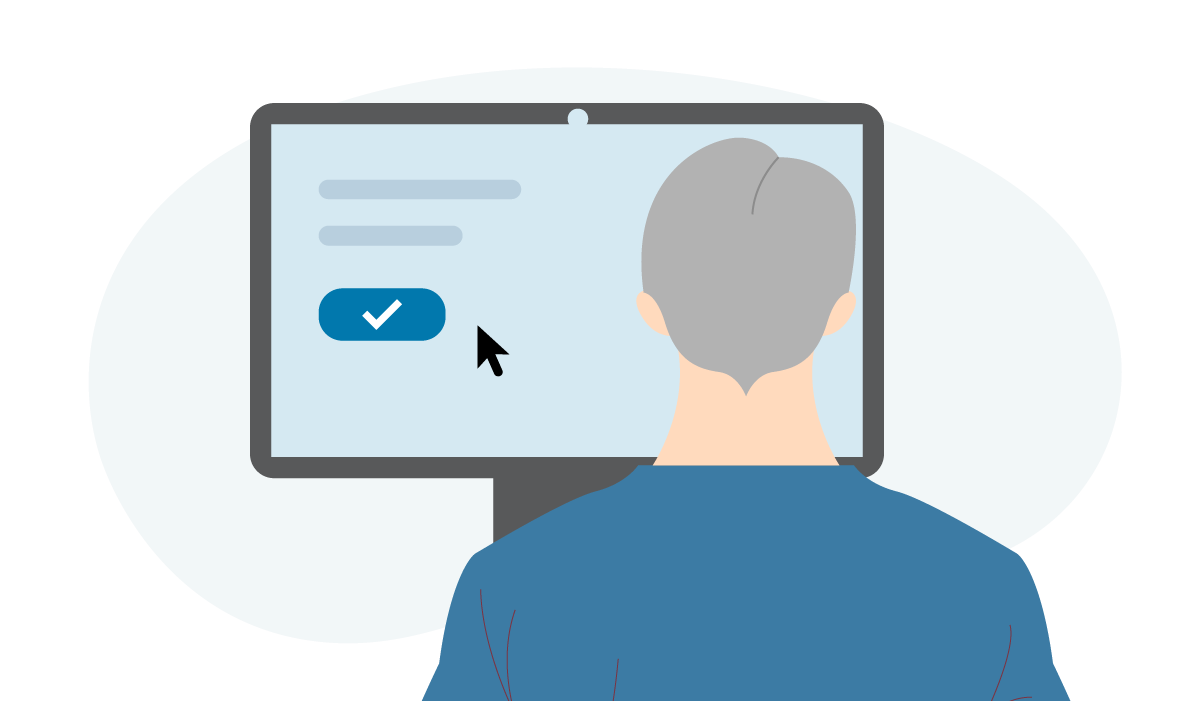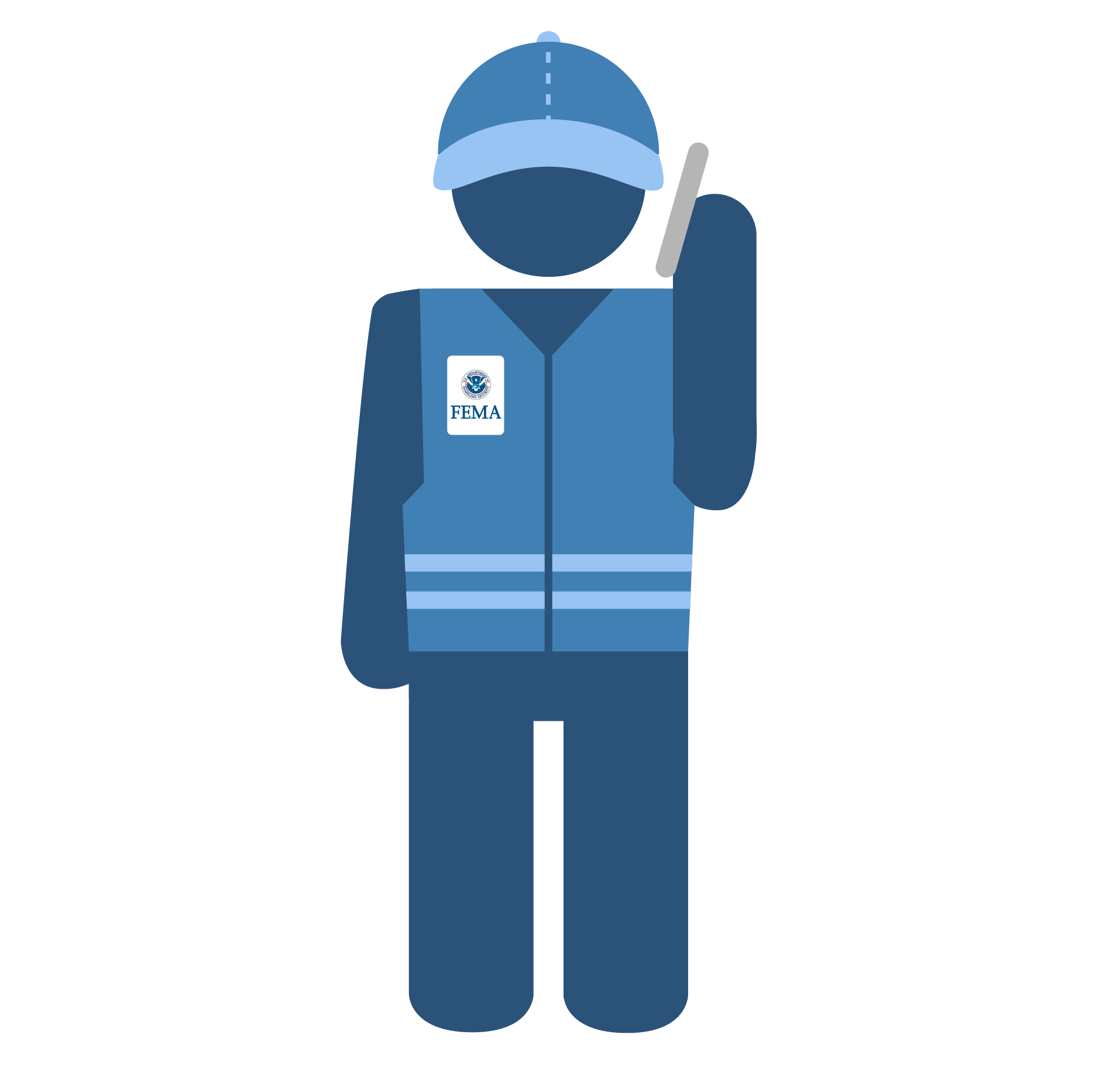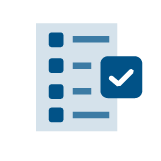Stay in Touch
Review Your Application
Identity Verification
Proof of Occupancy
Home Inspection
Submit Documentation
Who Can Discuss Your Application
FEMA provides money for the basic repairs to make a home safe, sanitary and livable. Your assistance will be determined by comparing your recorded essential losses and serious needs to the types of assistance available within FEMA Individual Assistance program and services. You may also be referred to the U.S. Small Business Administration (SBA) for low-interest disaster loans to further assist with your recovery.
Stay in Touch
You will have the choice to sign up for updates by email, phone calls, and text message. You may receive official updates from FEMA through:
- Emails from noreply-ecorr@dhs.gov or fema-automessaging@fema.intouchconnections.com or fema-automessaging@fema.dhs.gov.
- Calls from 1-800-621-3362 or 1-866-863-8673. Sometimes FEMA may call with a recorded voice message to give you information about your application.
- Texts from 43362 or 91908.

Remain alert and protect yourself against scams, as con artists are creative and resourceful. Scam attempts can be made over the phone, by mail, email, through the internet, or in-person.
If you receive suspicious emails or phone calls, you can call the FEMA Helpline at 1-800-621-3362 to verify if a FEMA call or email is legitimate.
We may reach out to you a few different ways to confirm your eligibility for a type of assistance, such as for a home inspection or lodging program.
- Read any messages carefully that FEMA has sent you. These pieces of information will explain any decisions FEMA has made and will tell you what steps you need to take.
- If you created an account at www.DisasterAssistance.gov, you may also receive messages there. Be sure to keep checking your account on the site for updated information.
If your address or phone number changes at any time since you applied, update your information with FEMA immediately by:
- Logging into your account at DisasterAssistance.gov.
- Calling the FEMA Helpline at 1-800-621-3362.
Review Your Application on DisasterAssistance.gov
There are many types of assistance that you may be eligible to get. As part of the review process, your application status may change a few times. You can always check the latest status by logging into DisasterAssistance.gov.


Did You Know?
After logging in, you will see every application you made to FEMA. Select the application you wish to view. Then, select the Status tab.
Making a Correction or Filing an Appeal
Contact us at 1-800-621-3362 or visit us at a Disaster Recovery Center (DRC) to make corrections to your application. You can upload documents to your application online.
If your application status says, “has not been approved,” this can be for a variety of reasons. Check online for a copy of your letter that will explain the specific reasons you have not been approved. Many times, we just need some extra information, or you may need to correct information.
If you disagree with FEMA's decision, you can appeal.
Additionally, while in your online account, you can:
- Review your disaster assistance application information
- Provide updates pertaining to your personal information and needs
- View letters and messaging sent to you by FEMA
- Get details on additional documents that FEMA needs to process your assistance
- Upload documents to your file
- Review information that FEMA has received from you
For help creating or signing into your account: Visit the Login.gov Help Center.
NOTE: Login.gov can’t answer questions about your application or information in your account, or questions about other technical issues on DisasterAssistance.gov.
Verify Your Identity
To receive assistance from FEMA, you need to prove your identity with a valid Social Security number. FEMA usually checks your identity using public records when you apply. If FEMA cannot verify your identity this way, we might ask for more information.
If You Applied for Yourself or Your Household
- Documentation from the Social Security Administration, or other federal entity, containing full or last four digits of your Social Security Number (SSN)
- Social Security card if sent with federal or state-issued identification
- Employer’s payroll document containing full or last four digits of your SSN
- Military identification
- Marriage license to confirm proof of maiden name
- U.S. passport
On a case by case basis FEMA may allow applicants residing in U.S. territories to submit specific identity verification documents, such as voter registration cards, etc.
If You Applied on Behalf of a U.S. Minor (Child) Citizen
- Any of the documents listed above if in the child’s name OR
- Child’s birth certificate AND a copy of the child’s Social Security card or documentation from the Social Security Administration, or other federal entity, containing the full or last four digits of the child’s SSN.
Verify Home Ownership/Occupancy
For certain types of assistance, FEMA must confirm the home listed on your application is your primary residence. Additionally, to receive money to help with home repairs, FEMA must confirm you owned the home at the time of the disaster.
FEMA typically verifies this information through an automated public records search. If FEMA cannot confirm this information this way, you will be asked to provide proof you owned and/or lived at the home.
View Approved Documents

Get a Home Inspection

After you apply, FEMA may need to verify your home and personal property damage through an on-site or remote inspection. FEMA inspectors are trained to identify damage caused by a disaster, but they do not decide if you will receive disaster assistance.
If your home cannot be accessed, the inspector may meet you at the obstruction or a neutral location to verify occupancy and/or ownership. Do not wait for the inspection to take place to start cleaning up, if it’s safe to do so. Remember to make a list of your losses, take photos of any damage and keep all receipts of expenses caused by the disaster.
Learn More about the Home Inspection Process
Submit Documentation
Sometimes for your application to continue in the review process, FEMA may need more information. You can send the documents with your name and application number by:
- Uploading documents online in the Upload Center at DisasterAssistance.gov.
- Mailing to FEMA, P.O. Box 10055, Hyattsville, MD 20782-8055. *Remember to mail copies and keep originals for your records.
- Faxing to 1-800-827-8112.

You can also visit a Disaster Recovery and Document Drop-off Center to have any documents scanned into your case file on-site.
Let FEMA Know Who to Talk to About Your Application
There may be a time when you need a friend or relative to talk to us on your behalf, you can do so by writing and submitting a third-party statement.
This is useful when:
- You are displaced and unable to be present during the home inspection.
Some people also need help filling out the application for FEMA assistance, and need a friend or third-party to help them. This could be helpful for:
- Senior citizens
- People who have difficulties understanding verbal and/or written information
- People with mental, physical or sensory challenges that may prevent them from understanding
If you wish to authorize FEMA to share your information with a third party, you must complete the FEMA FORM FF-104-FY-21-118: Authorization for the Release of Information Under the Privacy Act and return it to FEMA. This document is a legal agreement that allows another person over the age of 18 to provide and receive information from FEMA on behalf of the survivor.
The written statement can be uploaded to your DisasterAssistance.gov account, mailed, faxed or brought into a Disaster Recovery Center.
Mail to:
FEMA National Processing Service Center
P.O. Box 10055
Hyattsville, MD 20782-8055
Fax to:
1-800-827-8112
Verbal permission is only accepted when both the survivor and the third party are present at a FEMA Disaster Recovery Center or while calling the FEMA Helpline.

